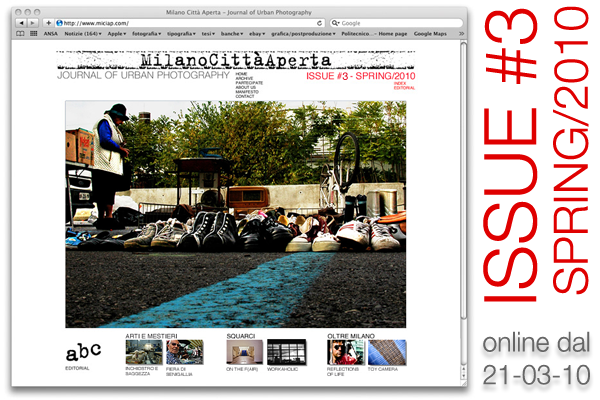EDITORIAL
«To make a drift, walk around without a destination or planned time. Choose the path gradually, based on what you SEE around rather than what you KNOW. You have to be ESTRANGED and look at everything as if it was for the first time. One way to make this easier is to walk rhythmically and look slightly upwards, so that ARCHITECTURE will be the centre of your visual field, and leave the street level at the lower end of your sight. You have to perceive the space as a whole and be attracted by details.». (G. Debord)
Guy Debord, the most important thinker of the situationist movement, said that, during the 20th Century, Western democracies had developed an ideology of consumption due to a large scale diffusion of mass media. He stated that our Show Business Society established relationships between the people (or rather the citizens) constantly mediated by images. What is “right”, or the aim of the citizen-consumer, is offered to you by the power that rules the mechanism of this essential exchange of information and, at the same time, gives a meaning to it.
Against this devastating influence on everyone’s life, the situationist movement offered (and maybe still offers) different tactics of resistance. One of these is the “psychogeographic drift” which we briefly related in a short description by Debord himself. Through the psychogeographic game it’s possible to see a new way to live the city, to obtain the elements for a radical critique of functionalistic and rationalistic city-planning of modern societies and to open up a possibility for the individual to regain possession of one’s critical and creative power.
The surrealists, too, used to wander around in urban walks without destination where they left their gaze free in order to store automatic visions, impressions and influences of the world. Theirs was a search for another reality, a fight against the rigidity of social dogmas and a new way of understanding people, things, the world.
Photojournalism, turned into an Art by the great Cartier-Bresson, was born from these premises. Report photography, with all of its political and social implications, is the most direct consequence of it.
Our number one issue is again a way of getting out in the real world, a photographic drift in the streets, in the houses, inside and outside the borders of Milan. A new encounter with marginal realities, the telling of old messages renewing themselves in the spirit of those who haven’t stopped thinking and acting, the rediscovery of liquid paradises holding on in a city that too often locks itself up in the irresponsible pretence of being mature and professional.


